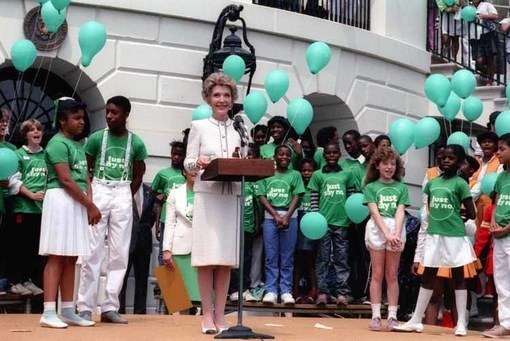
White House Photographic Office • Public domain
The release of the Mueller report and its conclusion that President Donald J. Trump and his top aides did not collude with Russia has prompted some important critical reflection on the American media and its penchant for sensationalism.
Sean Davis, a cofounder of The Federalist, published an article in the Wall Street Journal on March 26thtitled “A Catastrophic Media Failure” which concluded that “America’s blue chipped journalists botched the entire [Russia Gate] story from its birth during the presidential campaign to its final breath Sunday.”
Davis cites as an example a 2017 Time Magazine cover depicting the White House getting a “makeover to transform it into the Kremlin” and a December 2016. Washington Post story which erroneously reported that Russian hackers had “penetrated the U.S. electric grid.” In 2017, CNN reported the false claim that Donald Trump Jr. received special email access to stolen documents before their public release by Wikileaks – which if true, could have proven the president’s inner circle was colluding with Russian hackers intent on taking down Mrs. Clinton.
Davis further mentions an article by Jonathan Chait of New York Magazine before the Trump-Putin summit in July 2018 which speculated that “Trump had been a Russian asset since 1987” – a claim he says that was “worthy of conspiracy theorists like the late Lyndon Larouche.”
Matt Taibbi of Rolling Stone compared the coverage of Russia Gate with Iraq and the mythical WMDs, writing that “WMD was a pimple compared to Russiagate. The sheer scale of the errors and exaggerations this time around dwarfs the last mess.”
While some might consider this to be hyperbolic given the thousands of people who died in Iraq, Taibbi’s comparison is well taken if we consider that the Russia hysteria has increased tensions between the world’s two most advanced nuclear powers. Taibbi, though, avoids comparison with another false moral panic yielding a disastrous outcome– the crack epidemic of the 1980s which led to an escalation of the War on Drugs.
Following the death of basketball star Len Bias from an apparent cocaine overdose in June 1986, the media became filled with sensationalistic articles that exaggerated the ravages of crack cocaine. Echoing the rhetoric of President Ronald Reagan and his wife Nancy, ABC anchor Peter Jennings declared crack to be “instantaneously addictive” and “the most dangerous drug known to man.” The same month, Newsweek compared the spread of crack to a “medieval plague,” editorializing that “in 1941, the Japanese bombed Pearl Harbor and we went to war, and today little white packets are invading our country.”
According to sociologists Craig Reinarman and Harry G. Levine, the media frenzy about crack continued into 1989. Between October 1988 and October 1989, the Washington Post alone ran 1656 stories – 28,476 column inches – about the drug crisis. A short while later, the Posts’ own ombudsman Richard Harwood editorialized against what he called the “loss of proper perspective” due to such a “hyperbolic epidemic.” In 1987, the DEA had issued a private report blaming the media for distorting the public perception of crack, which it characterized as a secondary rather than primary problem in most areas. The National Institution on Drug Abuse (NIDA) concluded that less than one percent of young adults used crack which was not “instantaneously addictive.” To underscore this latter point, journalist Jefferson Morley smoked a rock of crack in 1989 and reported in The New Republic that he experienced only a mild euphoric high followed by a brief hangover the next day.
The damage by this point had already been done. Media hyperbole fueled political momentum for the War on Drugs just as Russia-Gate has fueled momentum for the escalation of a new arms race. The 1986 midterm and 1988 federal elections were characterized by candidates challenging their opponents to urine tests as Congress passed billion-dollar antidrug legislation that included excessively harsh penalties for crack. Longtime Floridian Senator Claude Pepper noted at the time that “we’re close to the point now where you could put an amendment through to hang, quarter, and draw drug dealers.”
Flash forward thirty years, and neither the media nor political climate in the United States has changed very much, with Russian bogeymen now serving to substitute for drug pushers. In a famous essay published in the November 1964 issue of Harper’s Magazine, historian Richard Hofstadter pointed to a “paranoid style” in American politics that was characterized by “heated exaggeration, suspiciousness, and conspiratorial fantasy.” According to Hofstadter these sentiments had deep roots in American history and erupted during periods of social dislocation and alienation of segments of society in response to social change.
Hofstadter’s analysis applies to both purveyors of the Russian conspiracy and crack epidemic narrative, who both sought to create scapegoats for deep rooted social problems. In the former case, Russia was blamed for the failings of the Democratic Party that led to the election of Donald Trump, while in the latter, drugs and the 1960s counterculture were blamed for an array of social problems that were exacerbated by Reaganomics. The media’s role in all of this was crucial in manufacturing a storyline that tapped into certain popular impulses, which in turn enabled them to make huge profits.
Moral panics are artificially manufactured public scare campaigns that are usually promoted from the top-down and help to advance regressive public policies that feed off irrational hysterias. How to avert them from taking place in the future is a difficult question and depends ultimately on the ability of the public to think critically for themselves and for social movements to articulate effective counter-narratives and explanations for persistent social problems, and to in turn organize people for change.